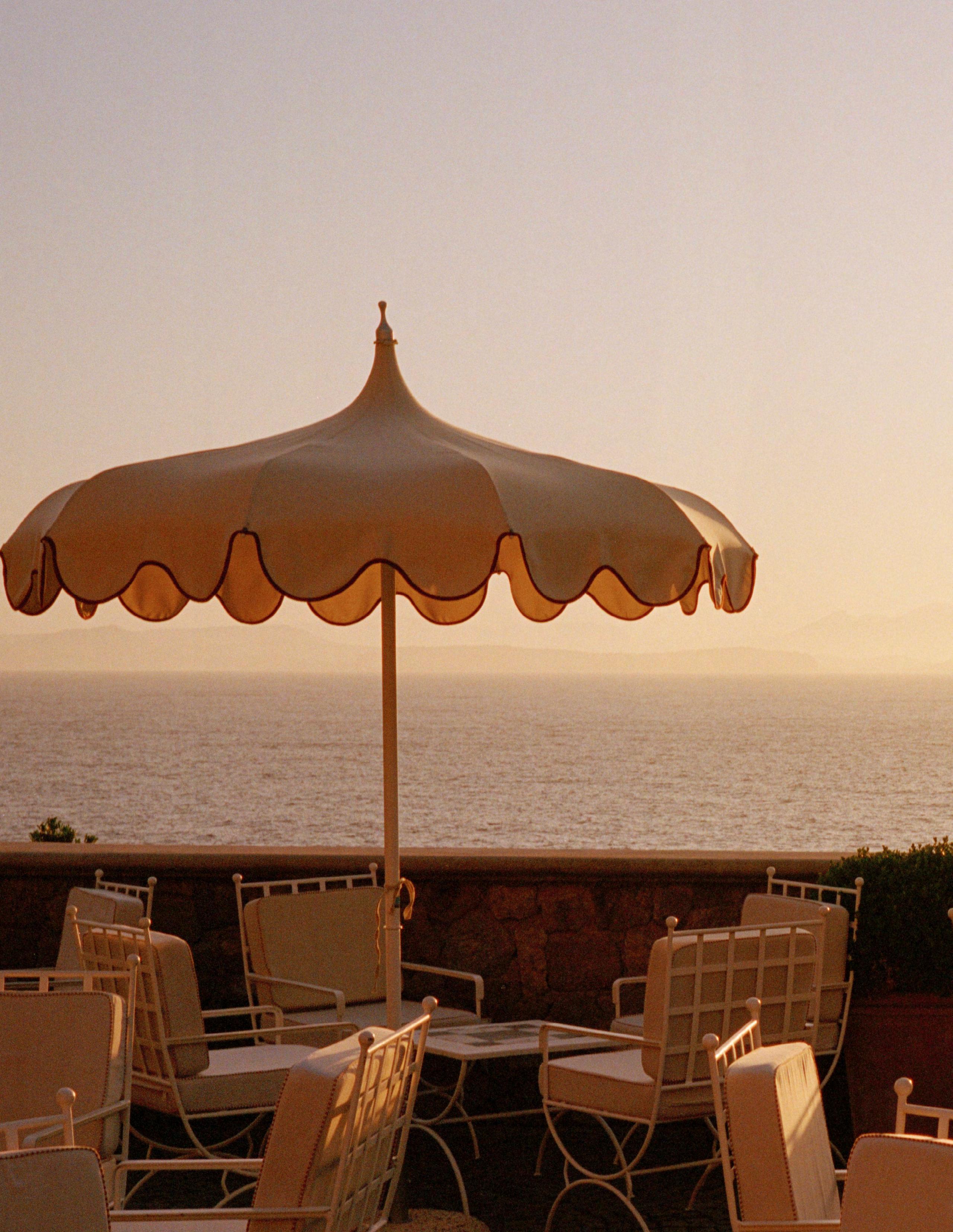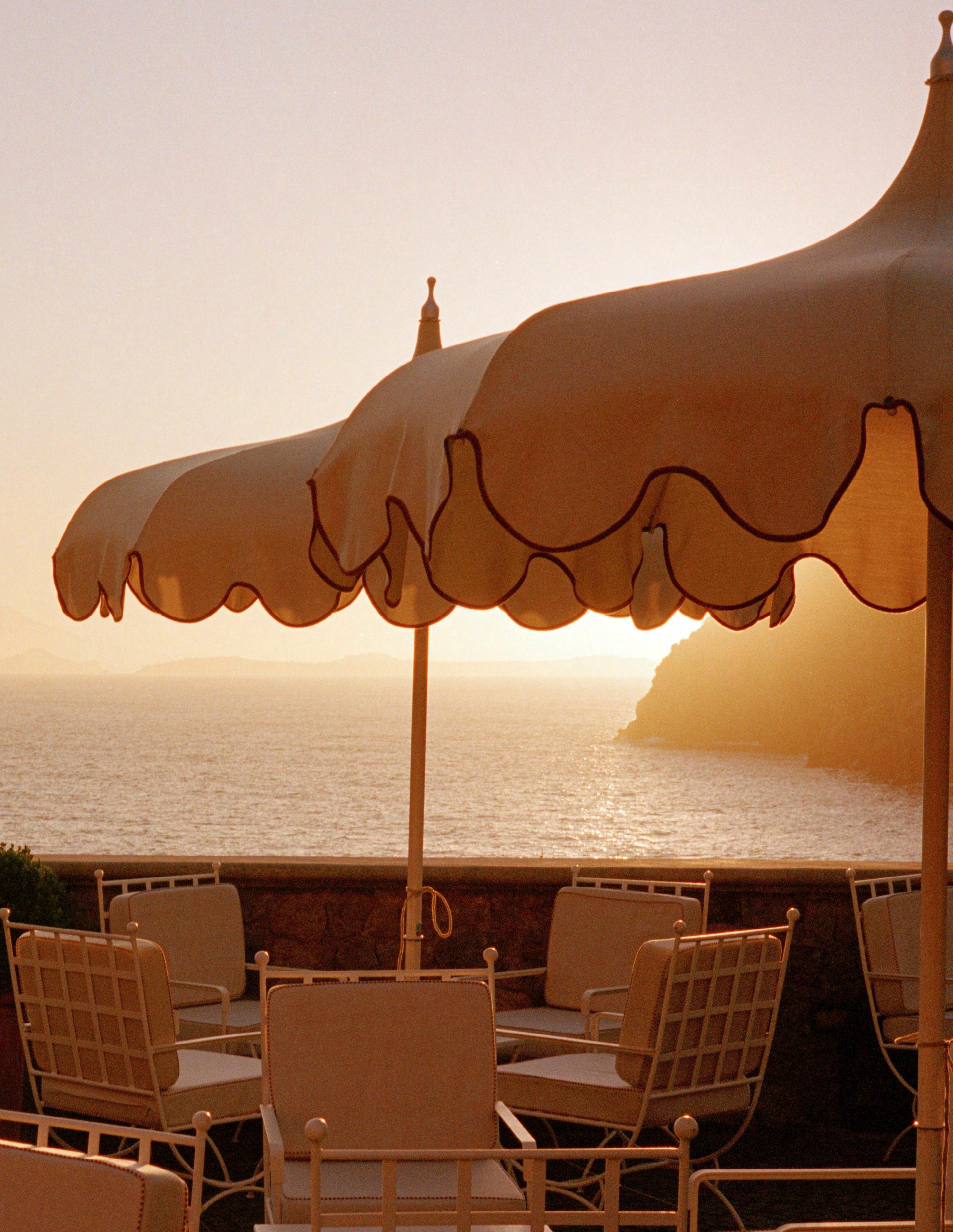




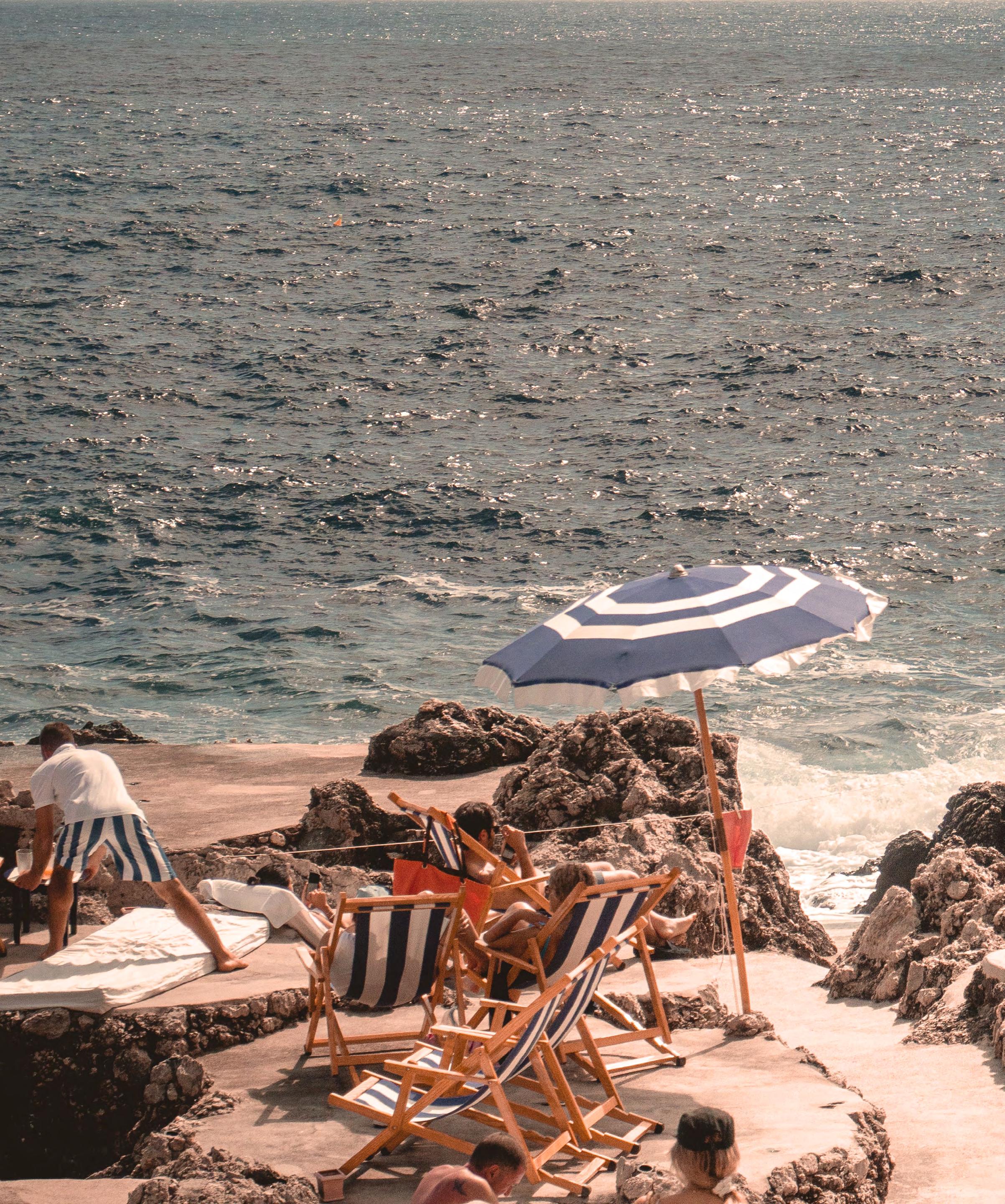

a mediterranean vision
“The wines didn’t fit the culture of how I was living my life and how nostalgically and romantically I wanted to live my life. I wanted to live the Mediterranean lifestyle; I wanted to drink Campari and Sodas and white wines that are salty and acidic and floral.” Dan Petroski is talking about the dissonance of his early days in Napa. By day, he made Cabernet Sauvignon; at night, he and the other winemakers in the Valley would sit around dinner tables dotted with imported white wines.
Dan started Massican to make “wines that you can put on the table at the peak of summer when you’re eating dinner outside with your friends and family.” He was just a few years removed from a late-career shift from media into wine, a “big swing” that landed him in the cellar of Valle dell’Acate in Sicily, then a harvest internship at DuMol, which, in turn, led to a job at Larkmead in 2006 working with then-winemaker Andy Smith to refresh the historic estate. When Smith left in 2012, Dan became Larkmead’s head winemaker, overseeing the winery’s transition into low-intervention winemaking and increasing its focus on vineyard-designate wines.
It was in his early days at Larkmead that Dan discovered some old vines of tocai friulano, and with the 2009 vintage, he started Massican with an opening salvo of 400 cases, a ribolla-friulano-based-blend, not exactly standard Napa fare (read more about this wine, the emblematic Annia, on the following pages). Over the next several years, Dan moonlit as Massican’s auteur while taking Larkmead from strength to strength, and this ability to straddle two worlds - positing Napa’s future while simultaneously caretaking its historical legacy - inspired the San Francisco Chronicle to name him “Winemaker of the Year” in 2017. In 2021, Dan left Larkmead to focus on Massican full-time.
Nearly fifteen years since its founding, Massican has become more than a white wine winery; it’s an entry point to conversations about accessibilty and affordability of top California wines. But this is only possible if the wines are good…and they are. The grapes may not be obvious, but the intention is clear because Massican is rooted in the personal, an extension of its founder: Italian in heritage and exuberant in expression; casually elegant wines built for the table and, perhaps, a bowl of brined olives.
[Petroski’s] ability to straddle two worlds - positing Napa’s future while simultaneously caretaking its historical legacy - inspired the San Francisco Chronicle to name him “Winemaker of the Year” in 2017.

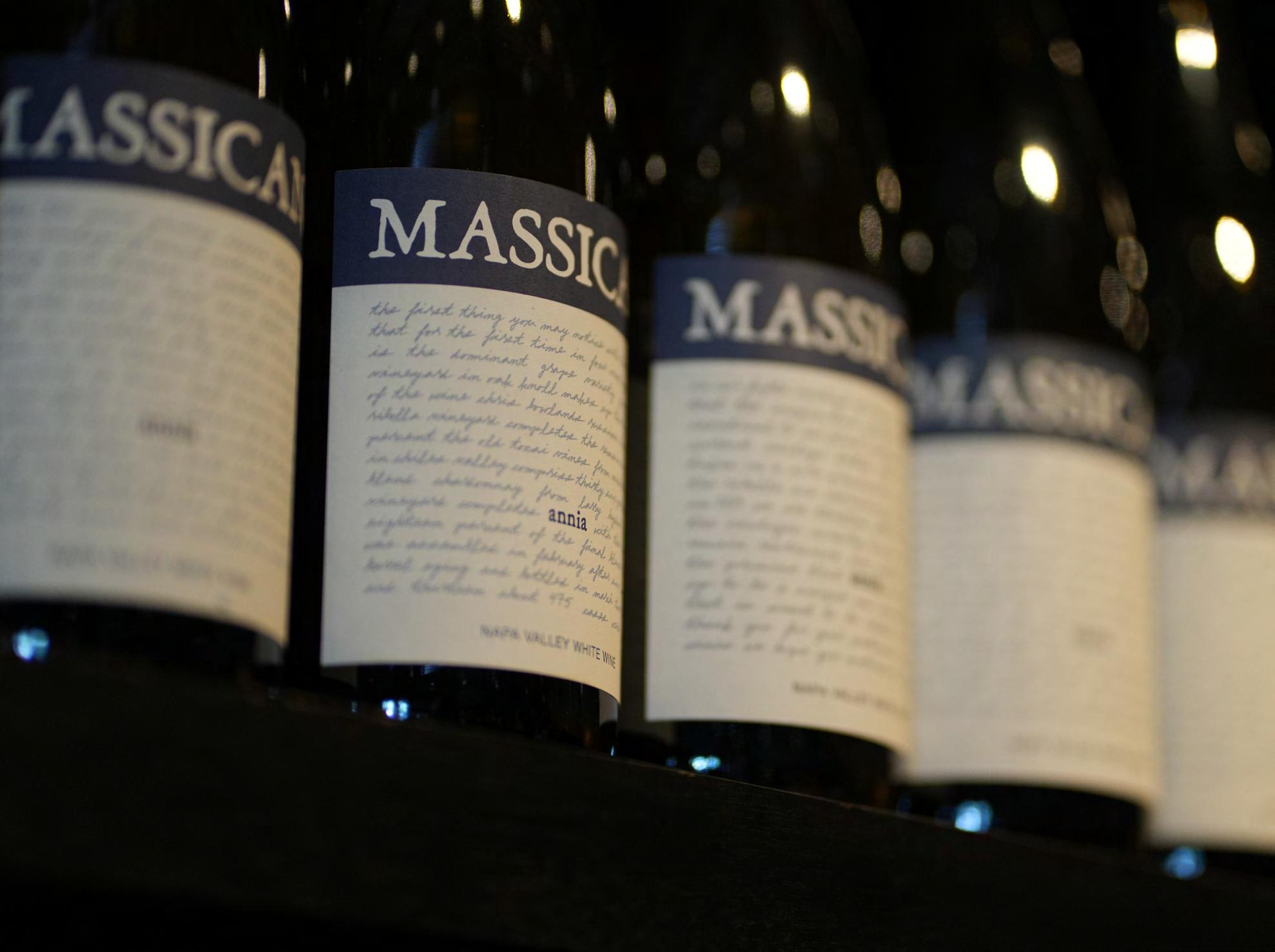
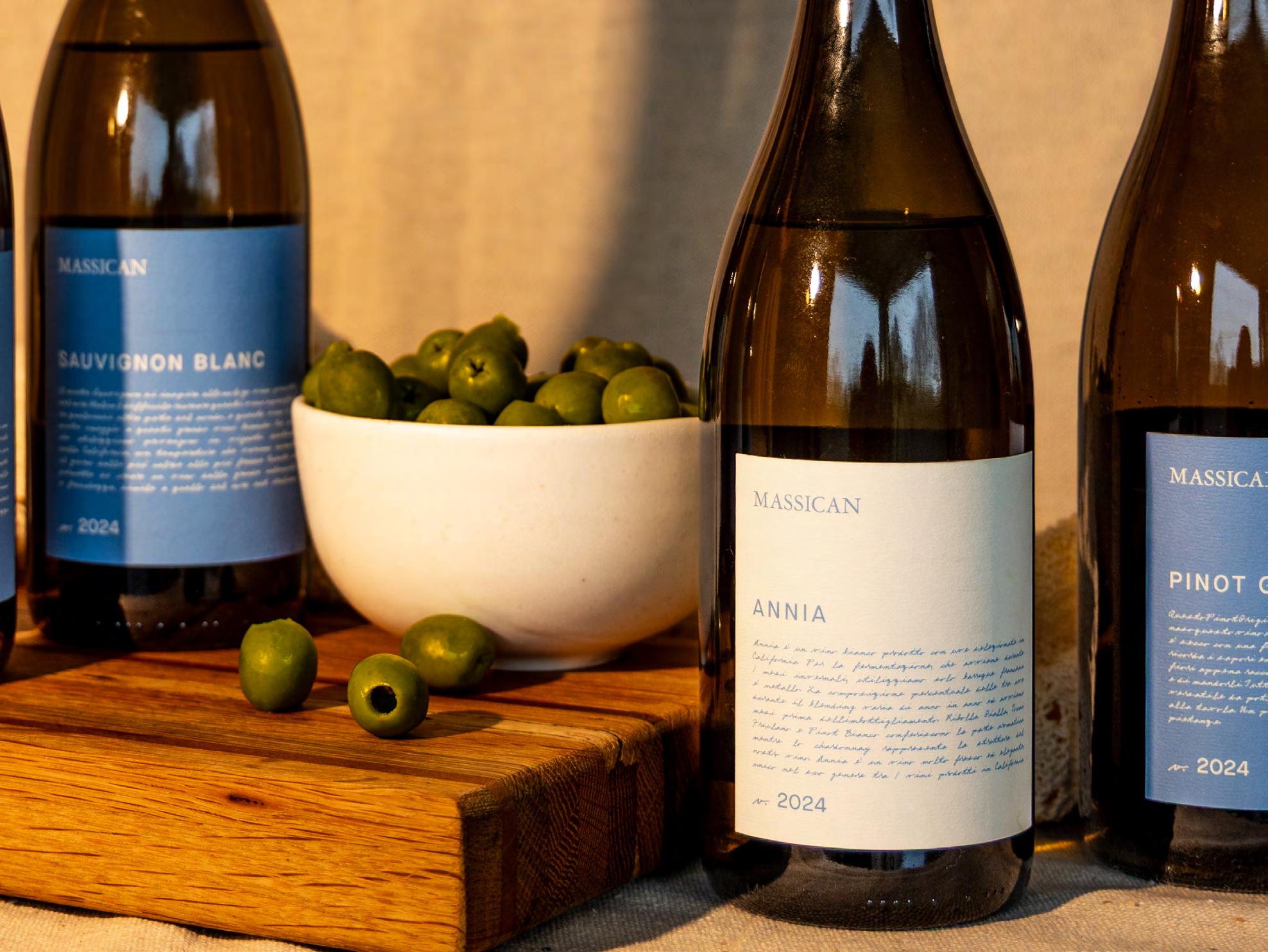
To talk about Massican is to talk about Annia.
Annia was Massican’s first wine. It was, in fact, envisioned initially by Dan Petroski back in 2009 to be Massican’s only wine, conceived, in part, as a kind of stylistic negative to the weighty, oaky Napa whites that had become ‘de rigeur.’
But it’s hard to say what came first, the idea or the grapes. Dan recollects that—like all good ideas—it happened concurrently: opportunity and inspiration mingled when he opened the California grape report, discovered plantings of ribolla gialla and tocai friulano, and got curious.
The tocai friulano, scarce as it was, made some sense. Thanks to its ability to botrytize, the grape made its way from Friuli to France (where it is known as ‘sauvignonasse’), and from France to small pockets all over the new world. Much of the Tocai Friulano in Massican’s Annia is from vines in the Nichelini vineyard that are nearly 80 years old, initially planted to satiate the post-war, white-wine-palate of returning soldiers (red wine took time, a luxury in short supply in war-torn Europe).
But the ribolla gialla? That was weird. How did an obscure native grape from the border of Italy and Slovenia get to Napa in the early 2000s? Who would give up a prime piece of Cabernet country for this idiosyncratic grape? The answer is George Vare - one of California wine’s great visionaries - whom Dan calls a mentor (there is too much to say about Vare here; google him and marvel). Vare fell in love with the grape when traveling through Italy, so much so that he planted his backyard with cuttings from Friuli-icon Joško Gravner, growing the first ribolla vineyard in North America.
For fifteen vintages now, Dan has sourced the Nichelini and Vare vineyards for Annia, blending their Friulian grapes with a percentage of Carneros chardonnay. The tocai friulano gives the wine pear flavors and
texture; Dan calls this the ‘roof’ of the wine. The ribolla brings savory qualities, spice, and sea foam salinity, the ‘floor’ of the wine. The chardonnay connects everything with rounded acidity; Dan references Lebowski when he calls it ‘the rug that ties the room together.’ The result is a wine that has its soul in Italy and its feet in California, an essential piece of Napa counterprogramming that still maintains the brightness of its provenance.
From 2015 to 2018, in a “through the looking glass” move, Massican bottled a blend of the same three grapes from vineyards in Friuli, prompting a friend to joke, “You make Italian wines in American, and American wines in Italy!” At the heart of that comment is the suggestion that Annia is borderless, which suits Dan perfectly. As you revel in Annia’s California fruit and salty Mediterranean finish, he will remind you that Massican isn’t a place; it’s an ideal.
There’s one more thing: the name.
Dan grew up in the (formerly) working-class neighborhood of Windsor Terrace in Brooklyn, and his mother would buy a bottle of wine every week to enjoy a small glass at the end of the day. Before starting Massican, Dan was dismayed that he was making wines in Napa that his mother couldn’t afford, and his new project offered him a way to correct that. Massican wines aren’t cheap, but they’re attainable, and that mattered. He named the wine after her - Annia - a loving tribute that would coax her to a nearby wine shop to tell the people working there, “That’s my name! That’s my wine! That’s my son!”
So, yes, to talk about Massican is to talk about Annia. It is not just a wine but also a person: an ode to mothers and mentors, the culture of the Mediterranean, and a democratic vision for the future of California wine.

The first thing you notice about the wines is the hue of the label, existing somewhere between sea and sky. But it’s not just branding; it’s a defining aspect of the winery, representative of both its history and its philosophy.
The Massican Blue comes from 6th-century frescos in Pompeii, close to the ‘Monte Massico’ of Southern Italy, where winemaker Dan Petroski’s maternal ancestors hailed. The Pompeiians imported the exotic blue dye - the world’s oldest artificial pigment - from Egypt and featured it so prominently throughout their city that it took on the name of its adopted home, becoming commonly known as ‘Pompeiian Blue.’
However, Massican’s labels do not feature *that* shade of blue (which is deeper and richer); instead, it captures the color as it is now, after centuries of fading in the salt-flecked air of the Mediterranean. It isn’t just color; it’s color over time, the intersection of known and unknown, intention and chance, art and nature, all of it alchemizing into something unexpected and beautiful. This serves as a metaphor for the Massican wines themselves, not just their saline, sun-drenched character, but also how the vagaries of ‘time’ and ‘place’ insert themselves, a context that gives them their ultimate meaning.
In 2019, Massican Blue was cataloged in the Harvard Art Museum’s Forbes Pigment Collection - the most prestigious collection of color in the world - where one can see a bottle of Massican Gemina holding a permanent place in the museum’s archives.
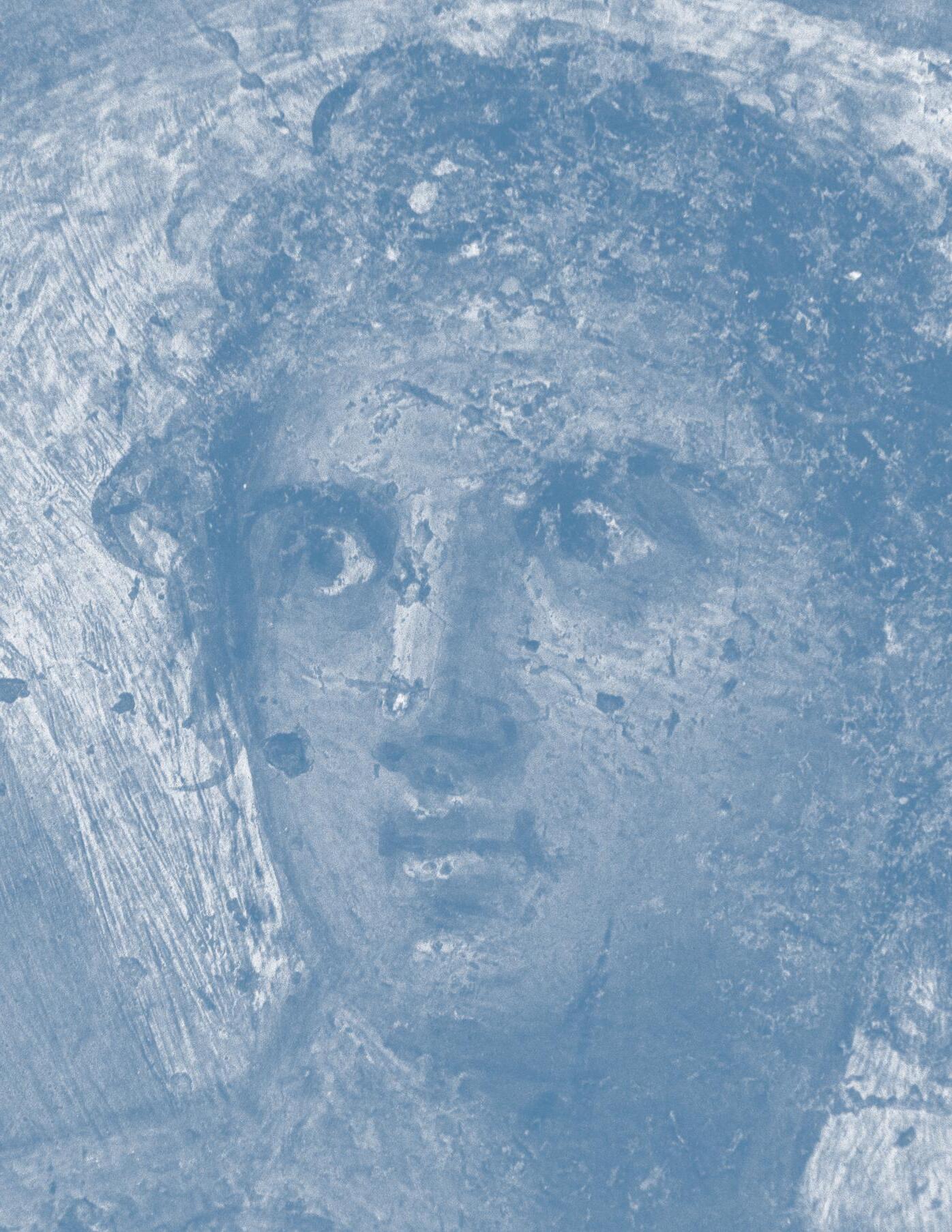
“Heaven’s tranquility and ocean’s infinitude, erudition, quietude and richest imagination, unwavering authority and universal harmony, the color blue is that of nature’s leviathans; becalming and subsuming with equal measure.”
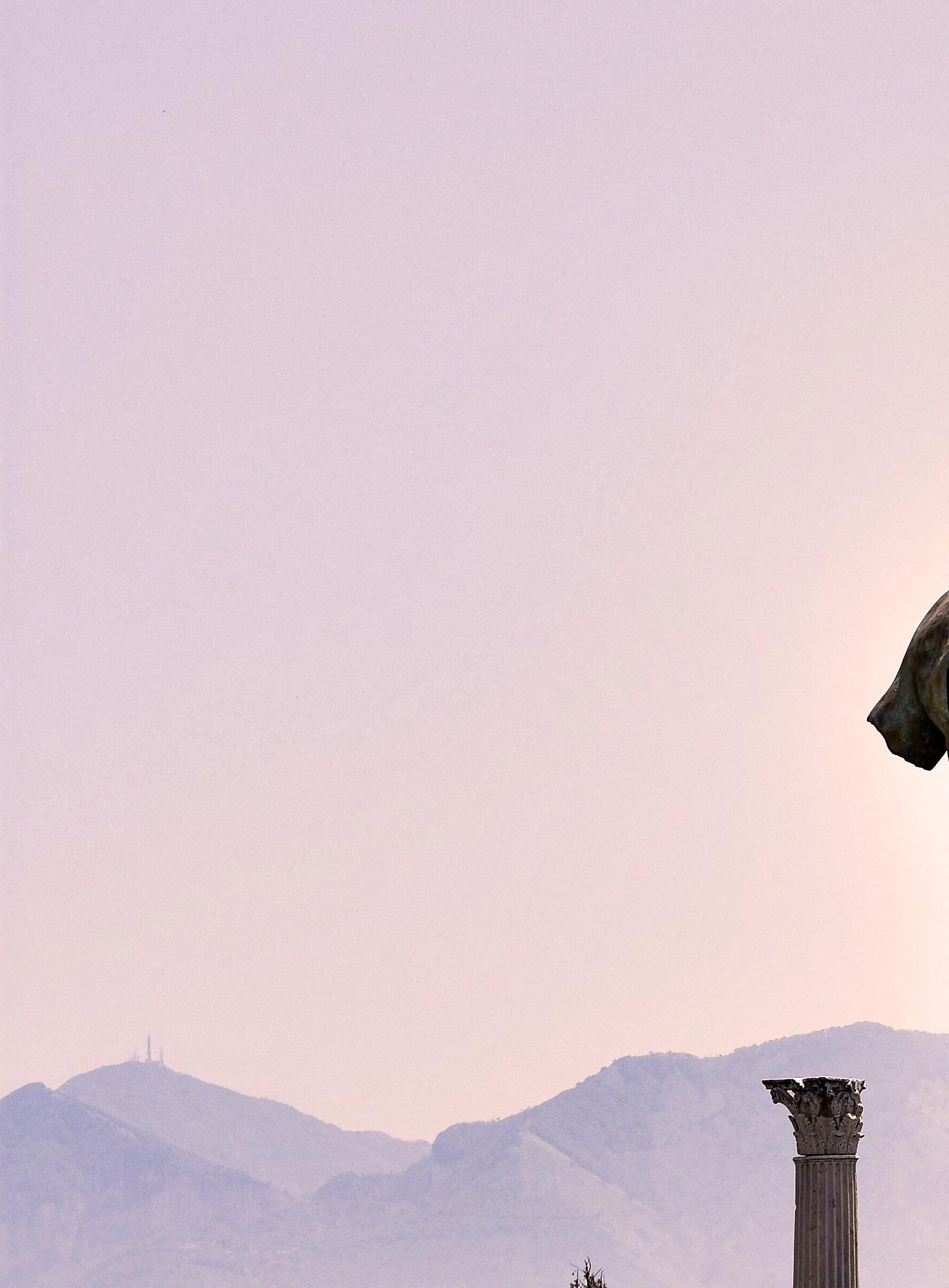
‘AN ATLAS OF RARE & FAMILIAR COLOR’ THE HARVARD ART MUSEUMS’ FORBES PIGMENT COLLECTION
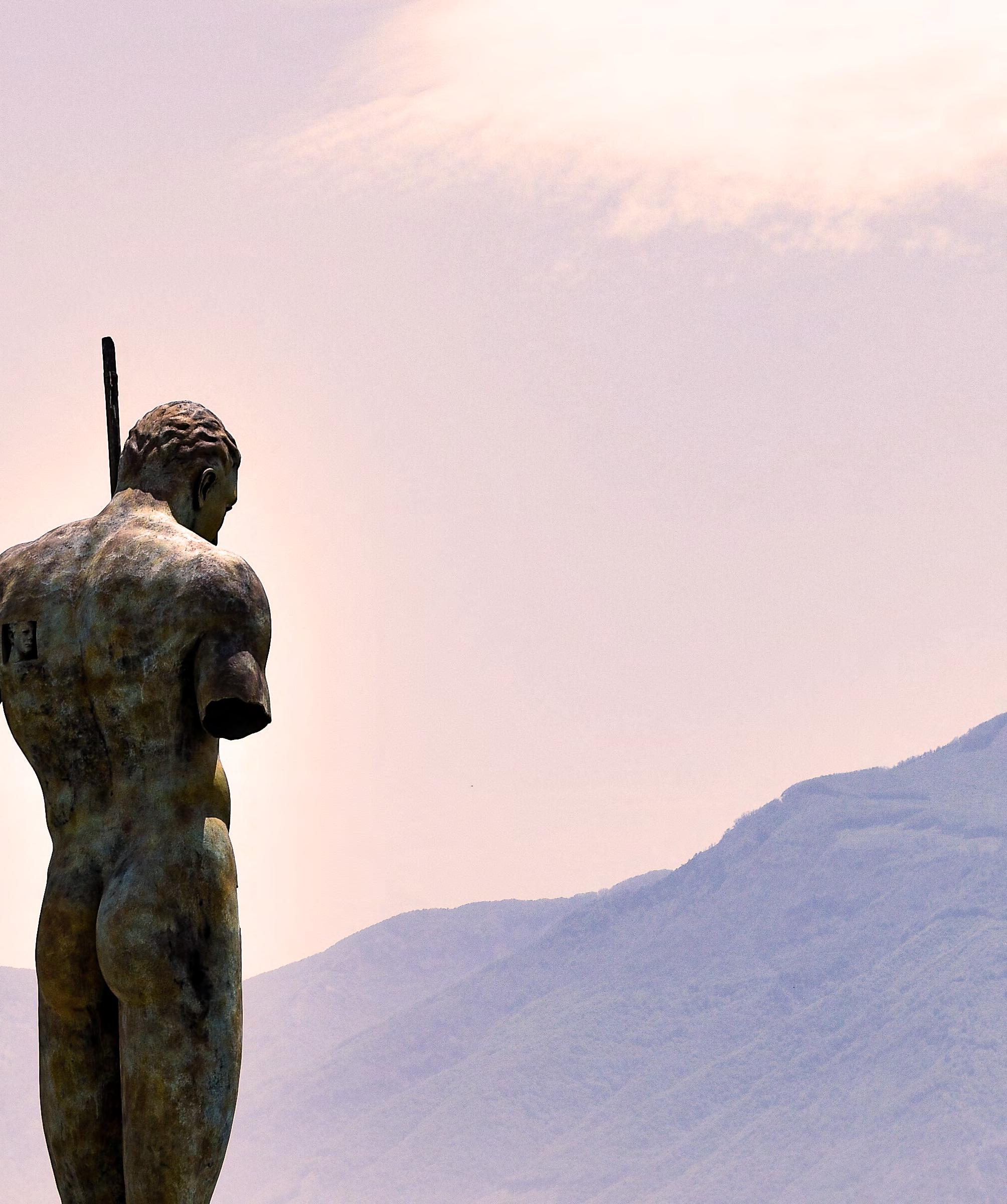
Massican sources grapes from several vineyards in northern California, having cobbled together relationships with farmers over the years to secure his unique grapes (Massican accounts for a third of all the ribolla Gialla and tocai friulano bottled in California). While some vineyard sources may change from year to year, others have been woven into the DNA of the wines.
The 2.5-acre Vare Vineyard (a historical name, the owners are now the Bengier family) is particularly important; the first and largest ribolla gialla vineyard in North America was planted in 2000 from budwood gifted by Friuli legend Josko Gravner, and it serves as the core of Massican’s Annia bottling. Also found in Annia? Tocai friulano from vines planted in 1946 at the Nichelini vineyard in Chiles Valley, tipped off to winemaker Dan Petroski by his friend Tegan Passalacqua.
Another critical source for Massican is the Juliana Vineyard in Pope Valley, initially planted for Robert Mondavi’s Fumé Blanc in 1993. Today it is the backbone of California’s best sauvignon blanc.
In search of greco and falanghina, Dan went further afield to Yolo and Lodi counties, finding organic vineyards (M Three Ranch and Lost Slough, respectively) that could provide additional fruit for his ‘Southern Italian’ bottling of Gemina.
Some vineyards weren’t found but earned. Chris Bowland planted ribolla gialla, tocai friulano, and greco in the Russian River Valley specifically for Massican. As Bowland told the San Francisco Chronicle: “When you plant, it’s a 20-year investment, so you don’t just do that on a whim, but what encouraged me with Dan is that he’s an honest person, and I know he’s going to be around a while.”
The following pages are devoted to a few key vineyards. Specific vineyard sourcing is detailed for each wine on their respective tech sheets.
H YDE*
LOST
*Indicates Organic Farming Practices

for

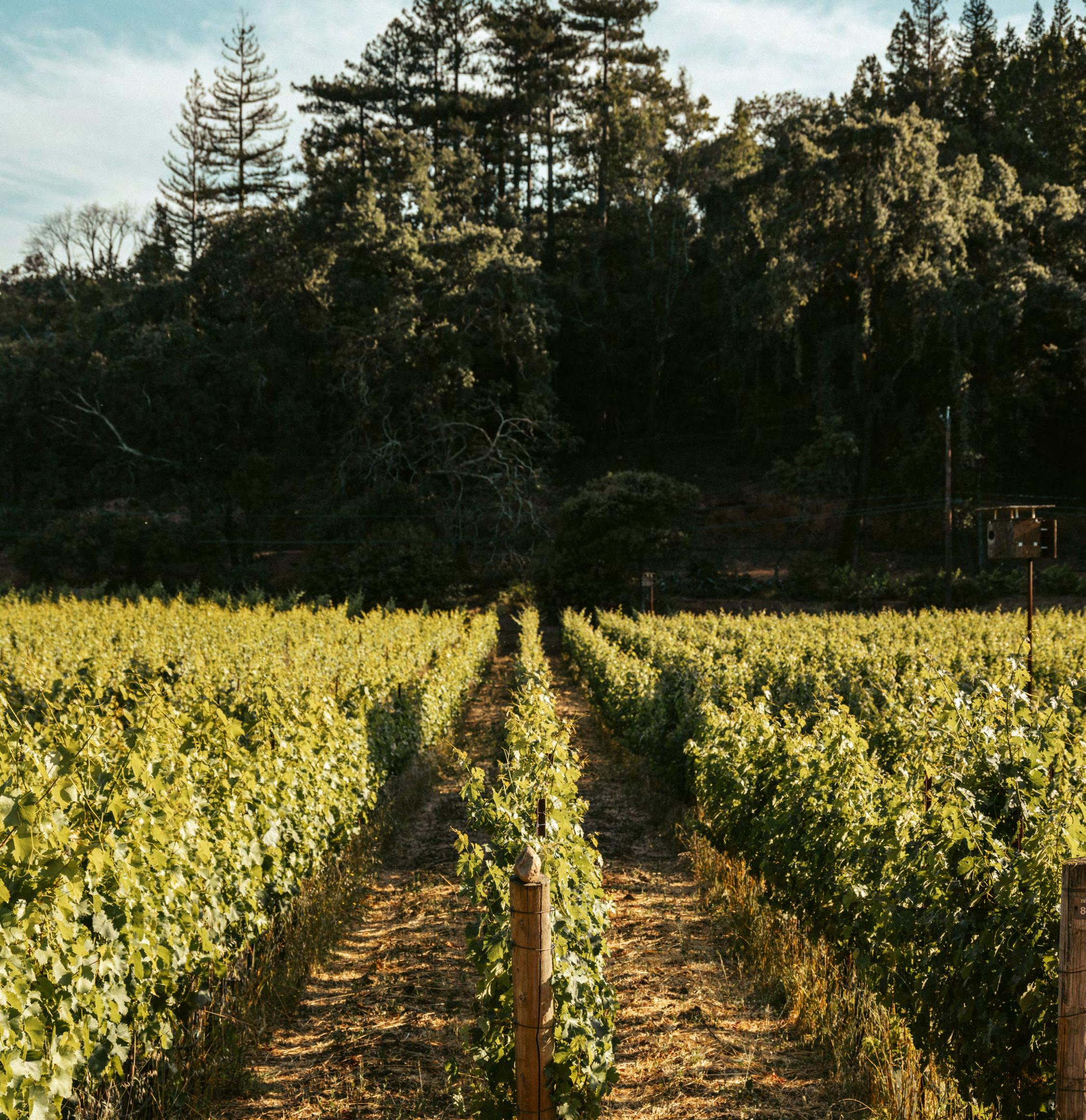
Oak Knoll AVA | Gravelly Clay Loam | Organic
Sourced for Ribolla Gialla
George Vare planted cuttings of ribolla gialla, given to him by Joško Gravner, in 2000; the first planting of the variety in California. At 2.5 acres, it’s also the largest planting of ribolla gialla in North America. Farmed organically by Steve Matthiasson.

Hyde Vineyard
Carneros AVA | Loamy Clay | Organic
Sourced for Chardonnay
Considered by many to be a California ‘Grand Cru,’ this 200 acre vineyard was converted from cow pasture to vineyard by Larry Hyde in 1979. Massican sources Musque and Wente clones of chardonnay from vines that were planted in 1992.
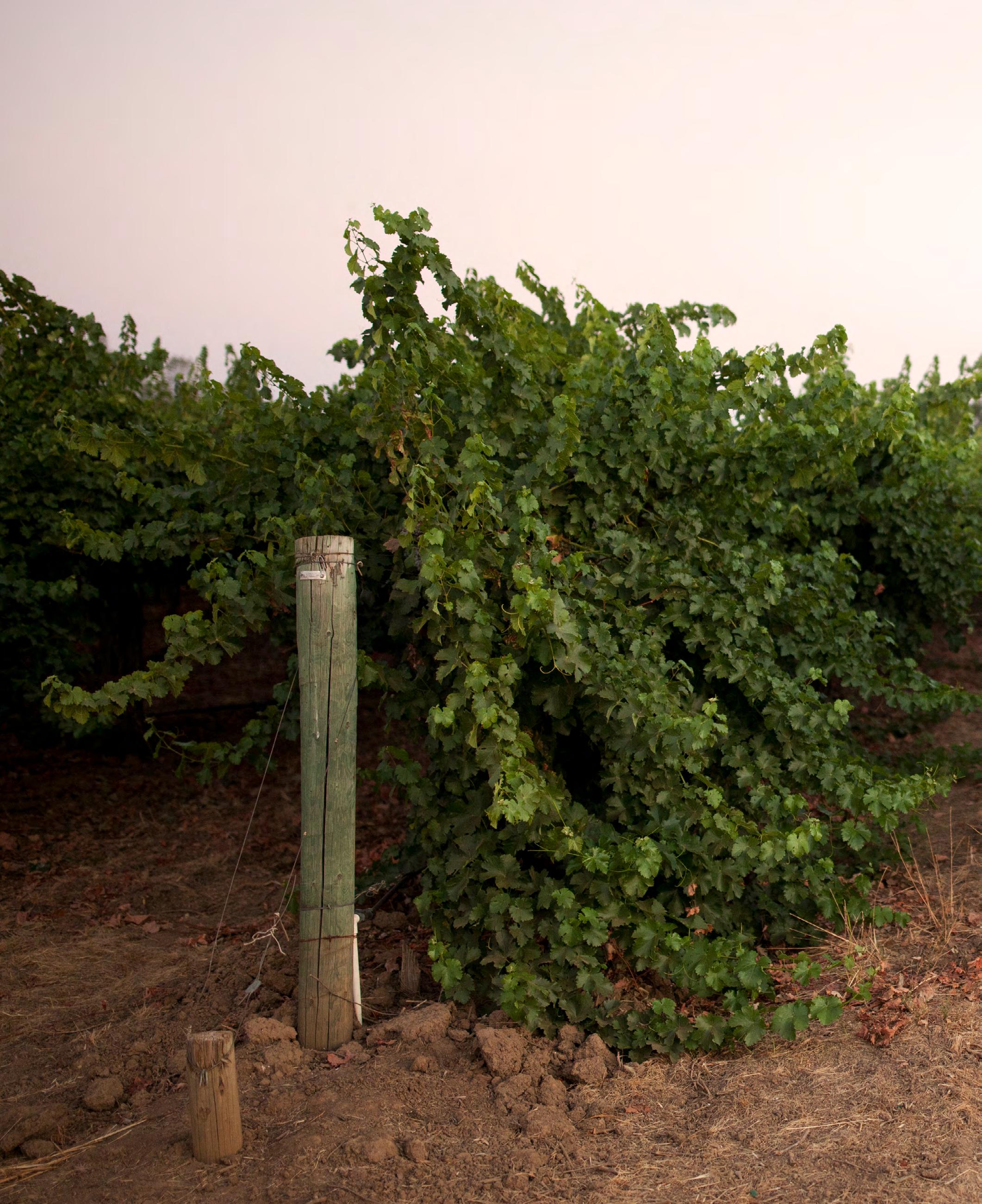
Sourced for Sauvignon Blanc
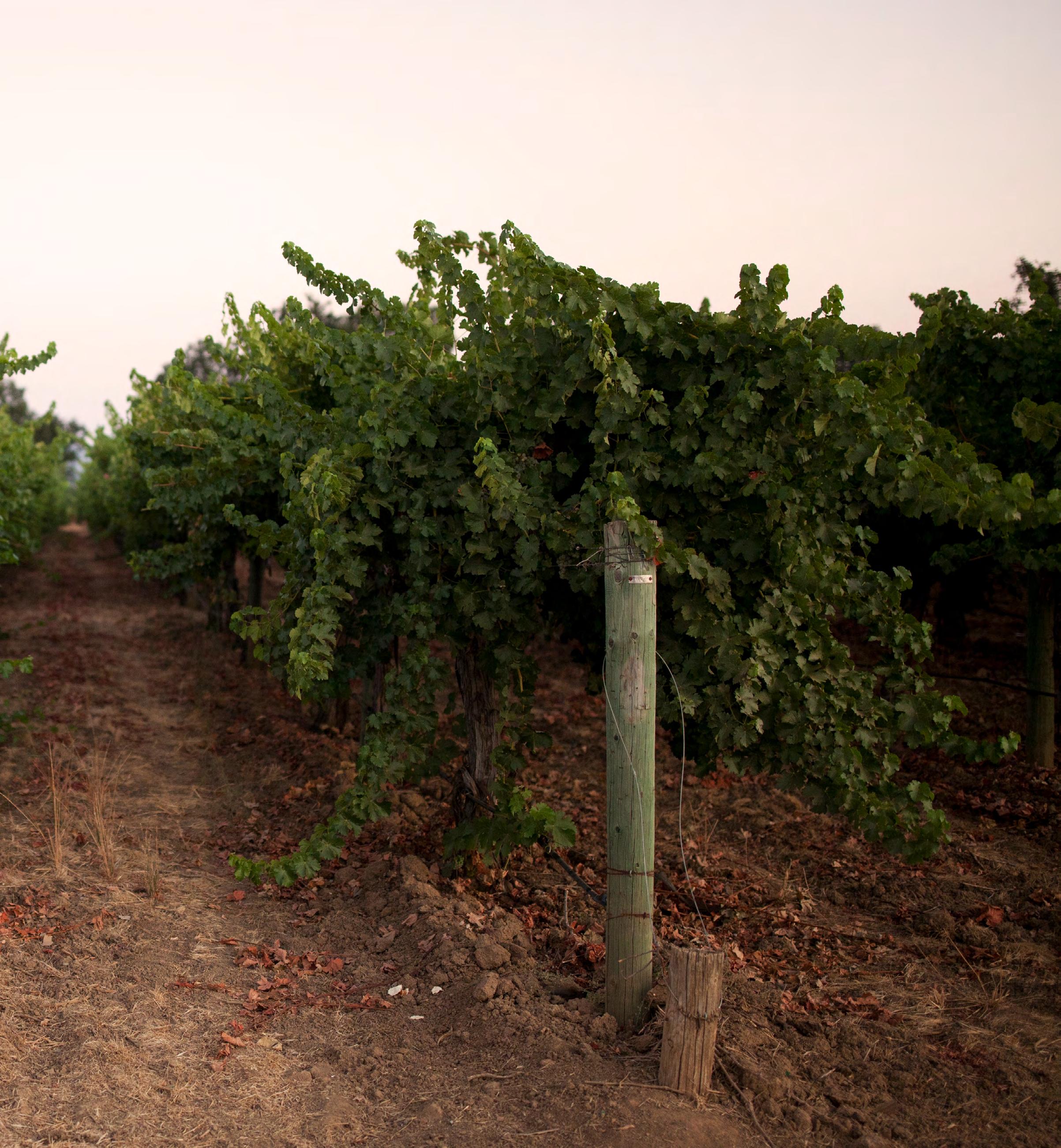
What, exactly, is a ‘Mediterranean’ white wine? It’s something we may intuit but never truly inventory. We can say they have an herbal or floral note, usually some citrus, a high, refreshing acidity, the impression of saltiness. Yet those descriptions, while accurate, fall short; it’s a “sum is greater than the parts” kind of thing. The best are nothing short of transportive, and variations on the theme are endless. In the case of Massican, winemaker Dan Petroski makes five core wines, all Mediterranean in style, yet as distinctive as they are fresh.
His flagship wine, ANNIA, a “Northern Italian” wine named for his mother, is an inviting and complex blend of ribolla gialla and tocai friulano (both native to Friuli in northeastern Italy), textured with a percentage of chardonnay—flowers on the nose, peaches on the palate, and an ocean spray finish.
GEMINA, Massican’s “Southern Italian” blend of greco and falanghina - grapes typical in the Massican hills of Campania - is more vertical and intense, a briny, citrusy foil for oysters, olives, or even just a hot day.
Massican also makes one of California’s best SAUVIGNON BLANCS, in the precise and aromatic fashion of Northern Italy, less driven by grapefruit than by lemongrass and wet stone.
Massican’s most scarce bottling is HYDE, a single-vineyard designated chardonnay from the eponymous and iconic vineyard in Carneros, an aromatic and heady mix of lemon cream and oyster shell.
New with the 2023 vintage is PINOT GRIGIO, an unmistakably Italian take on the variety that nonetheless retains California’s capacity to provide bright, lemony aromas.
Esther Mobley of the San Francisco Chronicle captured it perfectly in 2017, stating that the wines are unmistakable on their own, “yet they all, somehow, taste like Massican. Like paintings in a series, cast from the same color palette yet individual, the pieces cohere.”
The following pages detail the wines in the preferred tasting order of the winemaker.


Tocai Friulano, Ribolla Gialla, Chardonnay, and Pinot Bianco from Sonoma and Napa
Whole cluster pressed and left to settle overnight. Fermented in 300L used French oak & stainless tanks with a combination of indigenous and commercial yeasts. Nitrogen is added to aid fermentation; no other adjustments are made to the must.
Aged for 6 months in a combination of 300L used French oak & stainless steel.
Ribolla Gialla is sourced from the Bengier vineyard (Oak Knoll AVA) and Bowland vineyard in Sonoma (Russian River Valley AVA).
Tocai Friulano (known also as ‘Friulano’) is primarily sourced from the aforementioned Bowland vineyard (organic), as well as Nichelini vineyard (Chiles Valley AVA, planted 1946).
(Vineyard sourcing may vary with vintage; please refer to the tech sheets for more complete information.)
PACKAGING & PRODUCTION:
Diam 3 closure | 468 g bottle weight (unfilled) | 12-pack cardboard case | ~40,000 bottle production
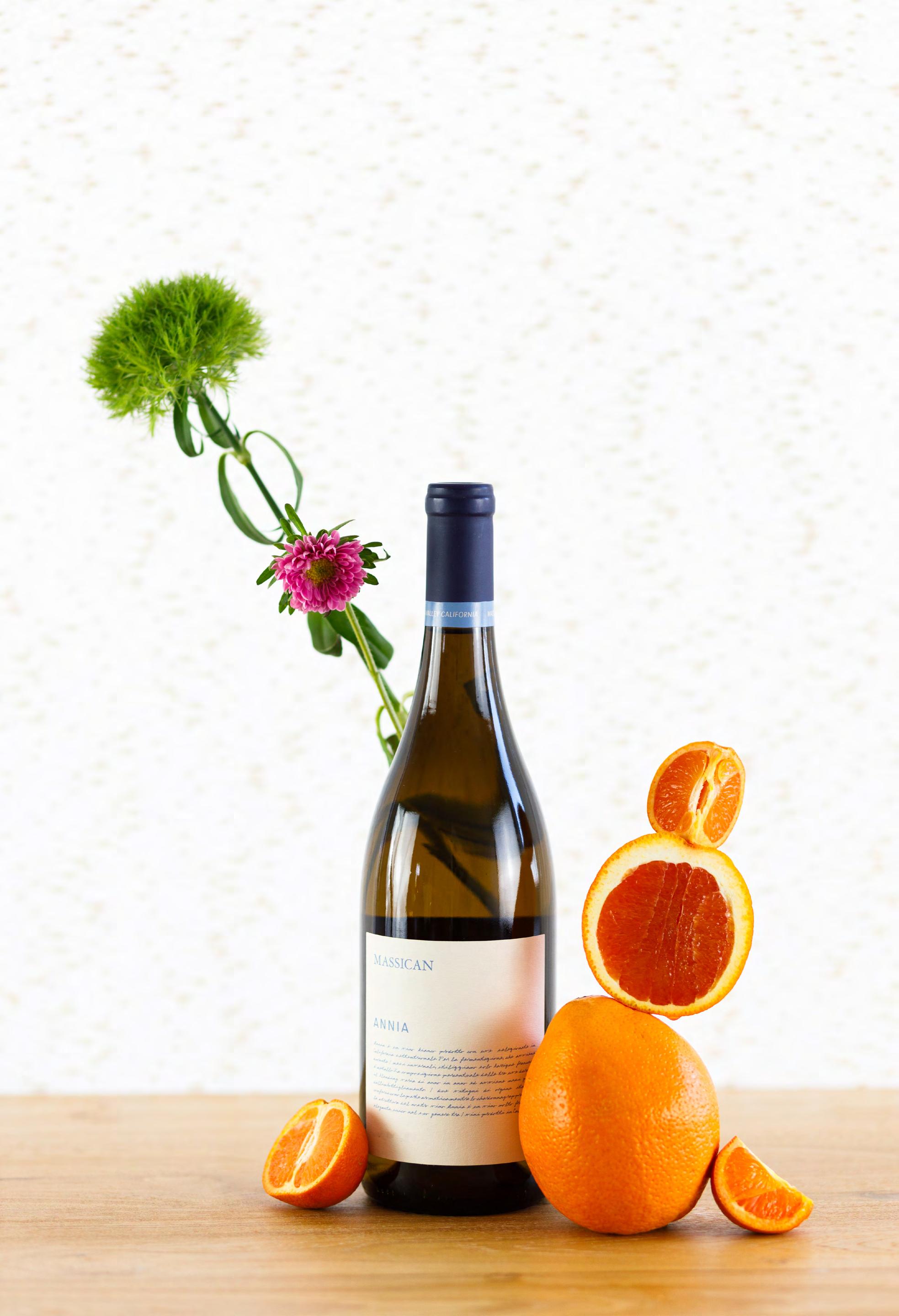
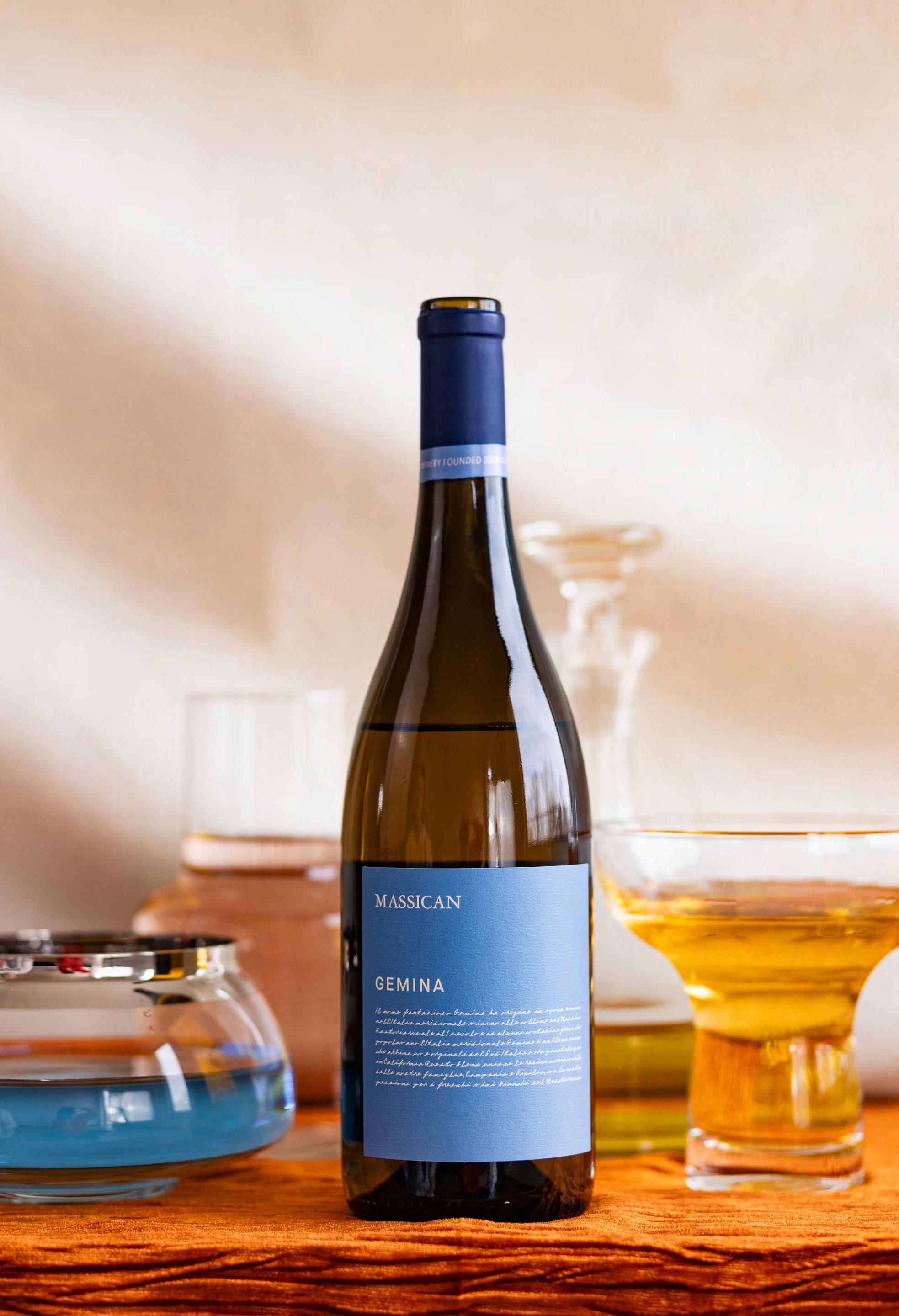
Greco, Falanghina, and Fiano from Yolo, Sonoma, and Lodi
Whole cluster pressed and left to settle overnight. Fermented in 300L used French oak & stainless steel with a combination of indigenous and commercial yeasts. Nitrogen is added to aid fermentation; no other adjustments are made to the must.
Greco is sourced from M Three Ranch vineyard in Yolo (Dunnigan Hills AVA) and Bowland vineyard in Sonoma (Russian River Valley AVA). Both vineyards are organically farmed.
Falanghina is sourced from Lost Slough vineyard (Lodi AVA), which is also organically farmed.
Fiano is sourced from the aforementioned Bowland Vineyard in Sonoma (Russian River Valley AVA) which is organically farmed.
(Vineyard sourcing may vary with vintage; please refer to the tech sheets for more complete information.)
PACKAGING & PRODUCTION:
Diam 3 closure | 468 g bottle weight (unfilled) | 12-pack cardboard case | ~18,000 bottle production
Pinot Grigio and Cortese from Sonoma and Lodi
Whole cluster pressed and left to settle overnight. Fermented in wood tank & 300L used French oak with a combination of indigenous and commercial yeasts. Nitrogen is added to aid fermentation; no other adjustments are made to the must.
Aged for 6 months in a combination of wood tank & 300L used French oak.
Pinot grigio is sourced primarily from the Thompson vineyard in Sonoma (Dry Creek Valley AVA).
Cortese is sourced from Lost Slough vineyard (Lodi AVA), which is organically farmed.
(Vineyard sourcing may vary with vintage; please refer to the tech sheets for more complete information.)
PACKAGING & PRODUCTION:
Screwcap closure | 468 g bottle weight (unfilled) | 12-pack cardboard case | ~40,000 bottle production
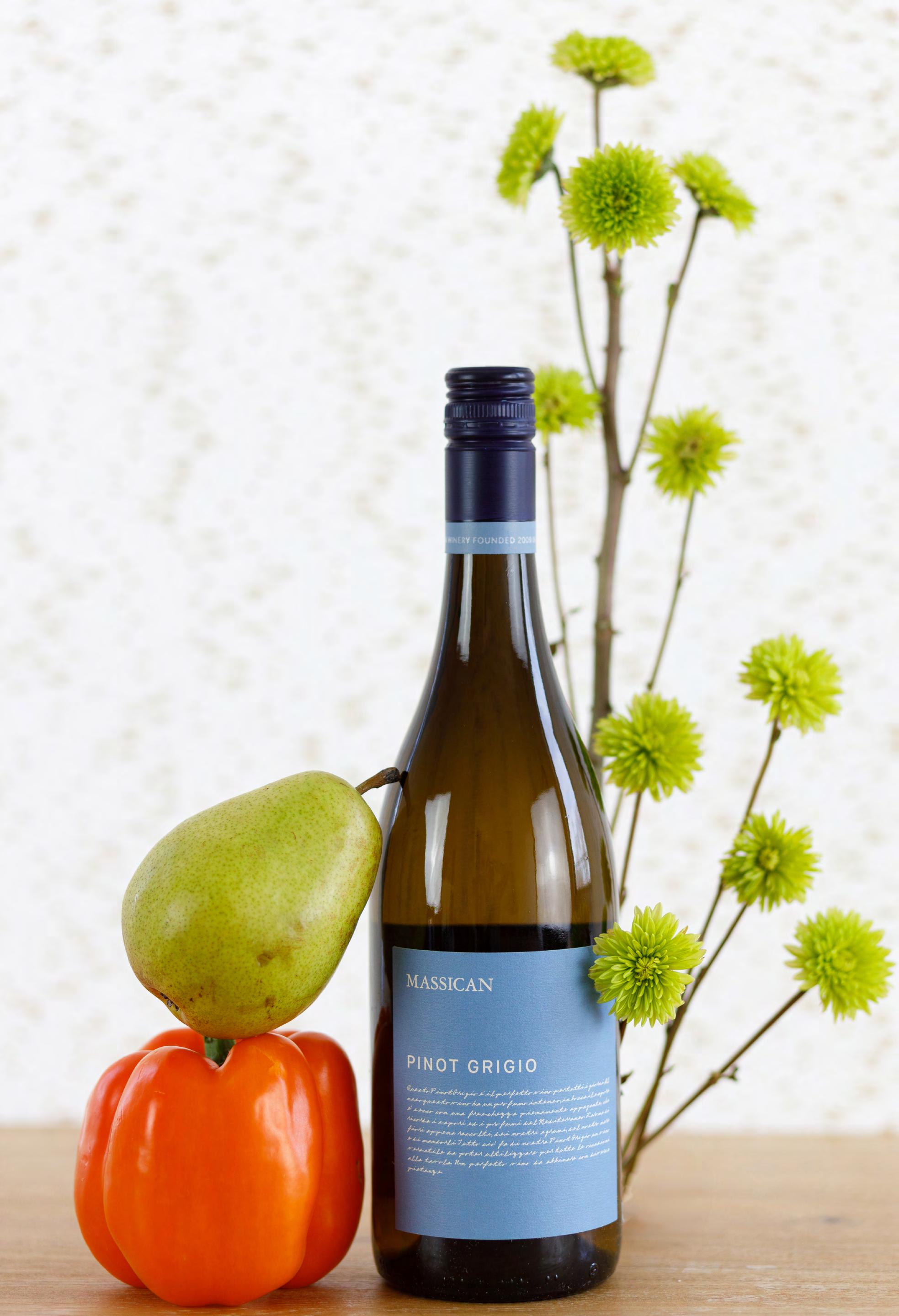
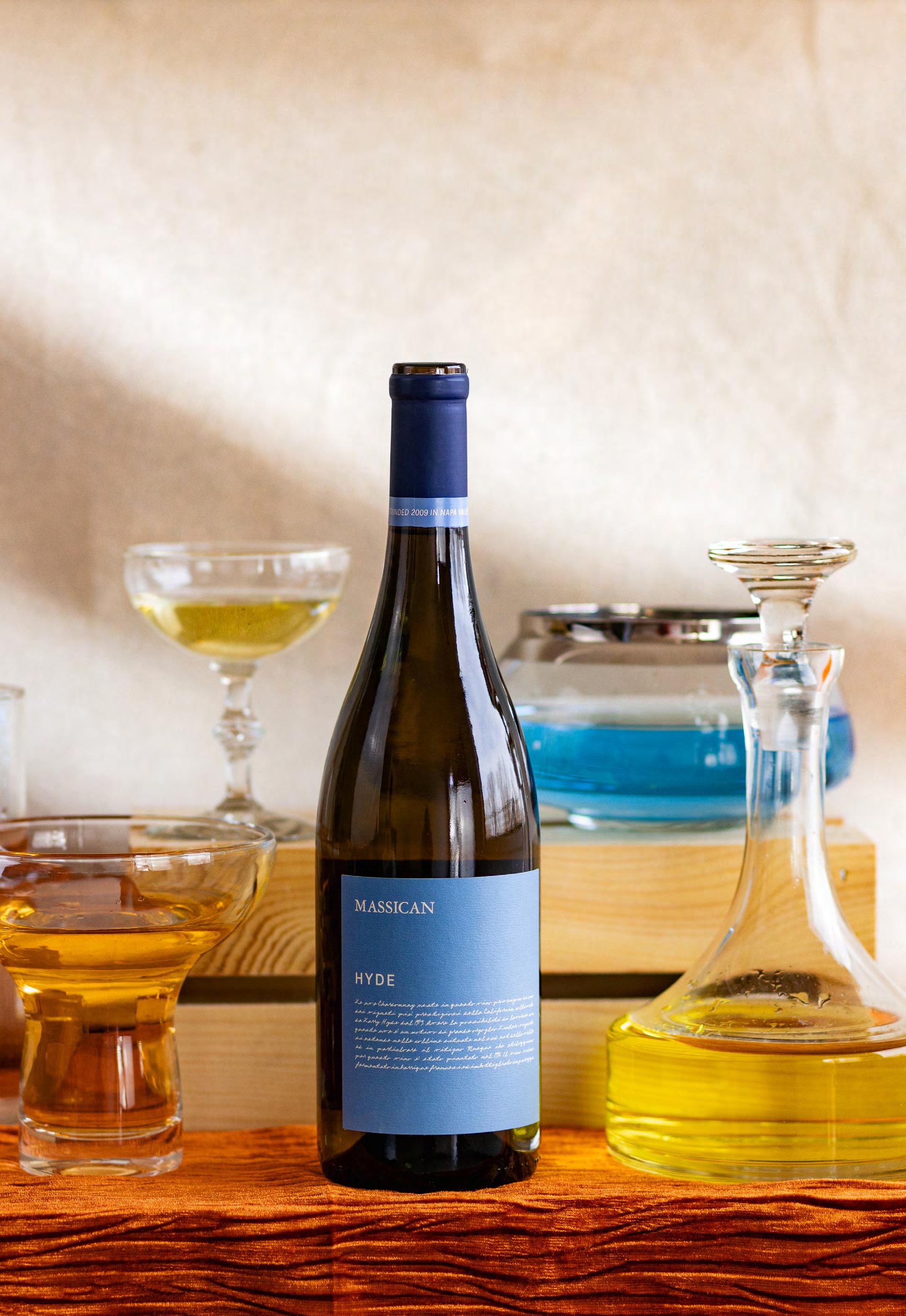
hyde Chardonnay from Hyde Vineyard, Napa
WINEMAKING
Whole cluster pressed and left to settle overnight. Fermented in 300L new French oak with a combination of indigenous and commercial yeasts. Nitrogen is added to aid fermentation; no other adjustments are made to the must.
Aged for 6 months in 300L new French oak.
VINEYARD
Sourced from the historic Hyde vineyard in Napa (Carneros AVA), which is organically farmed. The chardonnay for this bottlings was planted in 1992.
PACKAGING & PRODUCTION:
Natural cork closure | 468 g bottle weight (unfilled) | 12-pack cardboard case | ~6,000 bottle production
Sauvignon Blanc from Napa and Sonoma
WINEMAKING
Whole cluster pressed and left to settle overnight. Fermented in stainless steel with a combination of indigenous and commercial yeasts. Nitrogen is added to aid fermentation; no other adjustments are made to the must.
Aged for 6 months in a combination of 285L stainless steel barrels and stainless steel tanks.
Sourced primarily from three vineyards in Napa - Juliana (Pope Valley AVA) and John Anthony (Carneros AVA) as well as Alta Vista (Carneros AVA) in Sonoma.
(Vineyard sourcing may vary with vintage; please refer to the tech sheets for more complete information.)
PACKAGING & PRODUCTION:
Diam 3 closure | 468 g bottle weight (unfilled) | 12-pack cardboard case | ~40,000 bottles produced
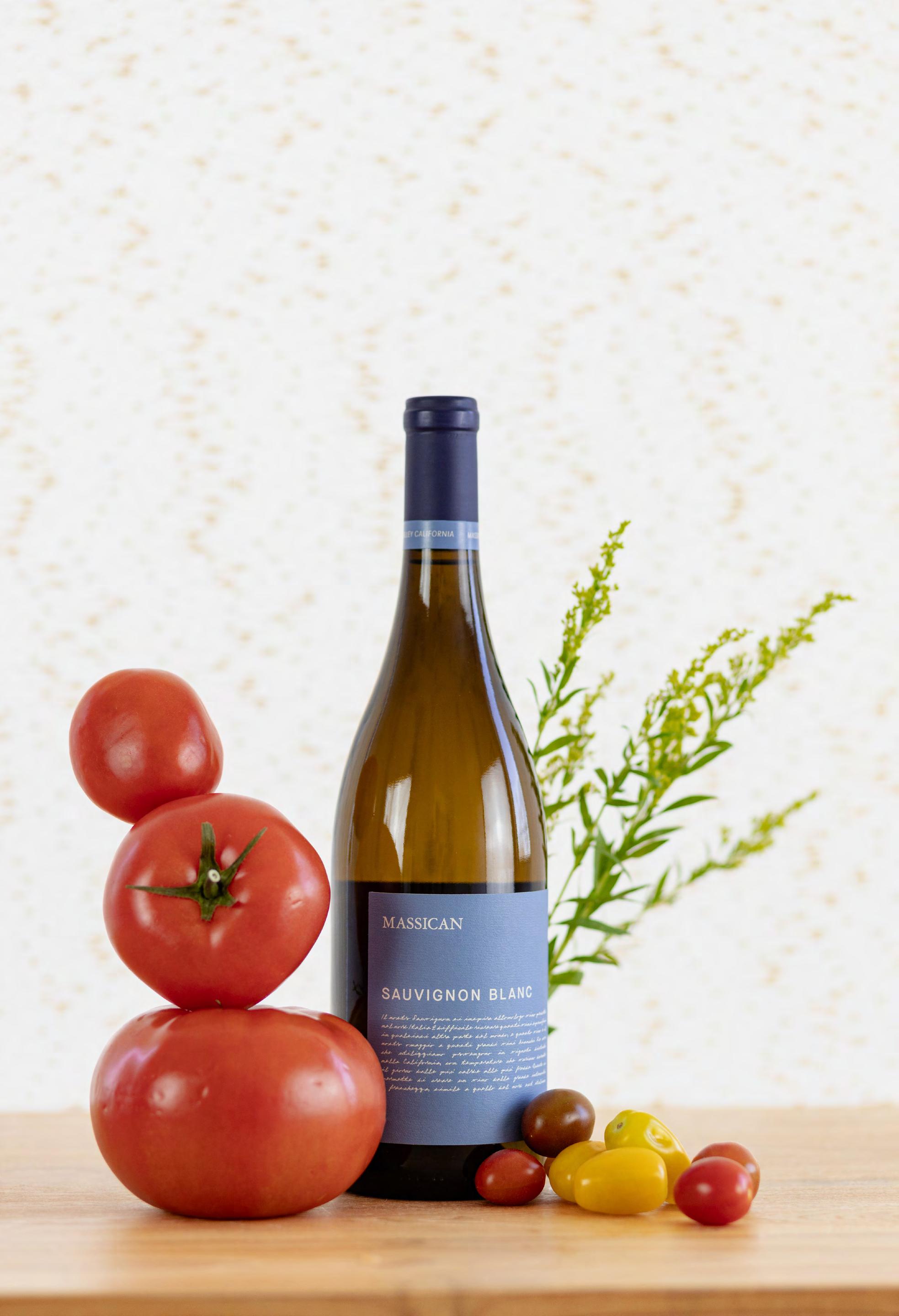

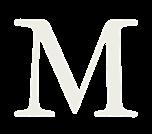
Manufacturing and transporting glass bottles is by far the most significant contributor to wine’s carbon emissions, making up a more substantial percentage of wine’s carbon footprint than farming and winery operations combined. However, a growing chorus of winemakers, trade, wine lovers, and critics (most prominently, Jancis Robinson) wants to change that.
Unfilled wine bottles can weigh as much as a kilogram, more than two times what experts believe is the minimum weight needed for the safe transport of wine. In the absence of a wholesale change to how wine is packaged, the most obvious thing a winery can do to lower carbon emissions is bottle its wines in lighter glass.
Unfortunately, while this sounds like a simple change, it’s not. The number of wineries seeking lighter bottles is still niche; recognition is not yet at a tipping point, and the ‘premium’ feel of a heavier glass bottle remains an expectation from many consumers. Without significant demand, glass manufacturers aren’t incentivized to invest in creating new molds and transitioning production lines. Add to that the ongoing global glass shortage, and you can understand that moving to lighter glass is not just a matter of choice; it takes real work to drive awareness, source partners, and build steadily towards a better solution.
In partnership with Gallo Glass - the largest glass container plant in the country - Massican has moved to 468gram bottles with the 2023 vintage, a 20% decrease in bottle weight. Just as importantly, partnering with a California supplier means bottles aren’t shipped across the ocean only to be filled and shipped again.
With a current annual production of 10,000 cases, a 110-gram-per-bottle drop from our current weight would represent 29,000 pounds less glass, and a 25% reduction in CO2 emissions from just production alone. The goal is not just for Massican to be better stewards; it’s to help bring a new standard to American wine.
Opposite Page:
Lighten up!, an illustration by
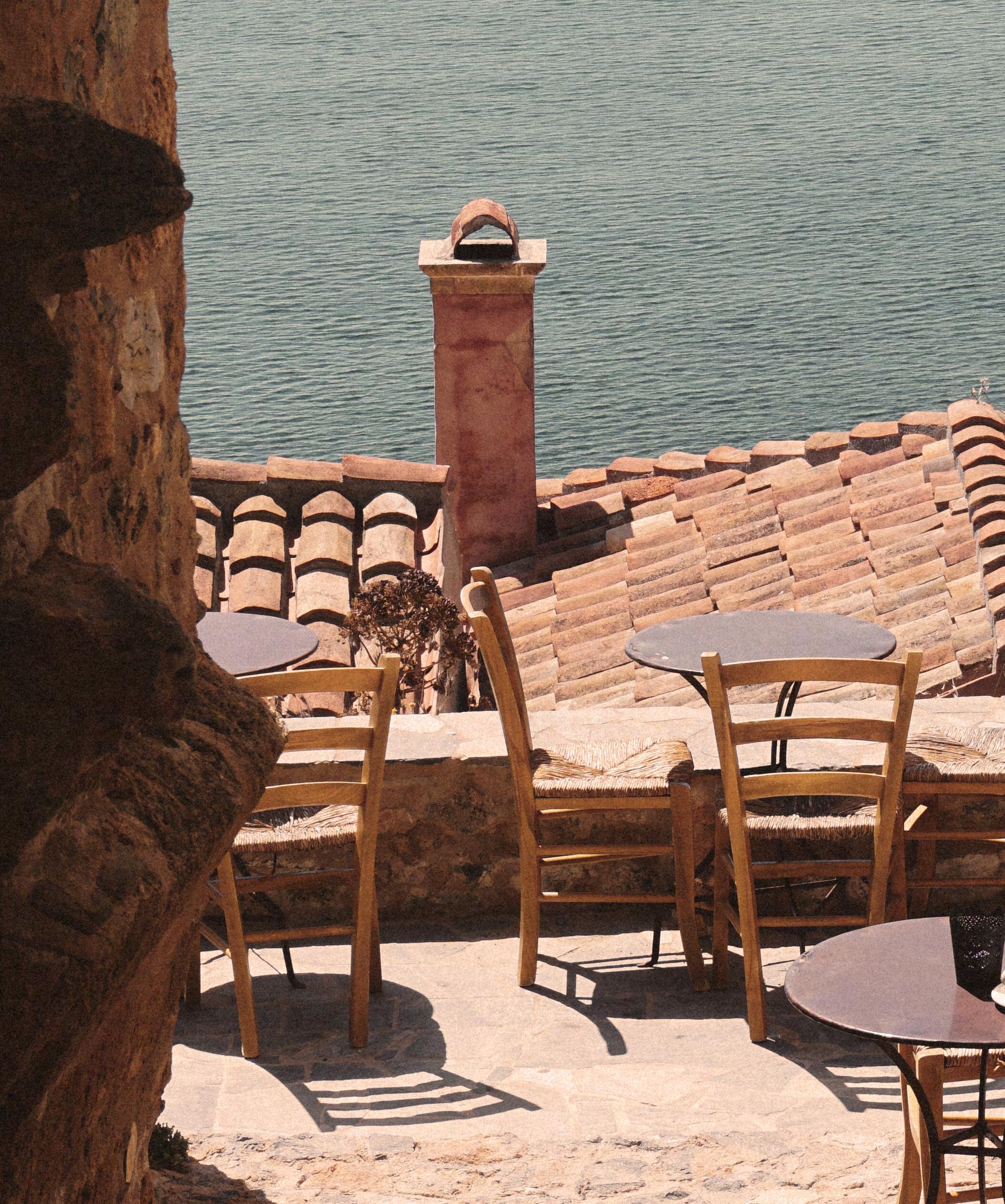
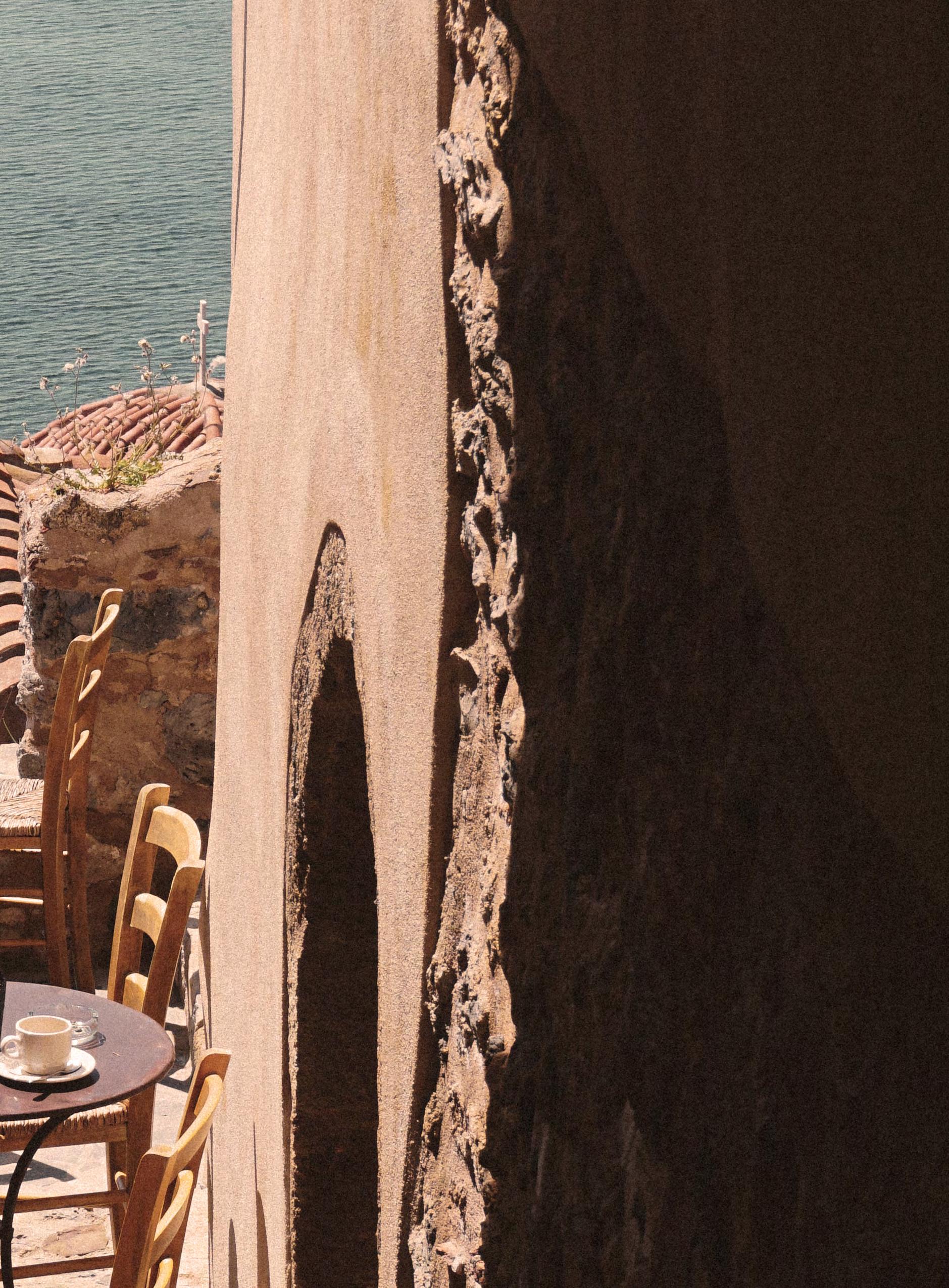
“NOT THAT THE MASSICAN WINES ARE IDENTICAL TO EACH OTHER. EACH WINE PERFORMS ITS DISTINCTIONS: A TART SAUVIGNON BLANC; A CITRUSY CHARDONNAY; A TEXTURED [GRECO BLEND], CALLED GEMINA; A PERFUMED, MINERAL CUVEE BASED ON RIBOLLA GIALLA AND TOCAI FRIULANO, CALLED ANNIA.
YET THEY ALL, SOMEHOW, TASTE LIKE MASSICAN. LIKE PAINTINGS IN A SERIES, CAST FROM THE SAME COLOR PALETTE YET INDIVIDUAL, THE PIECES COHERE.”
THE SAN FRANCISCO CHRONICLE
